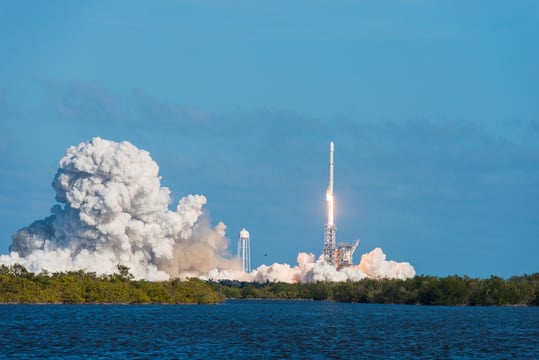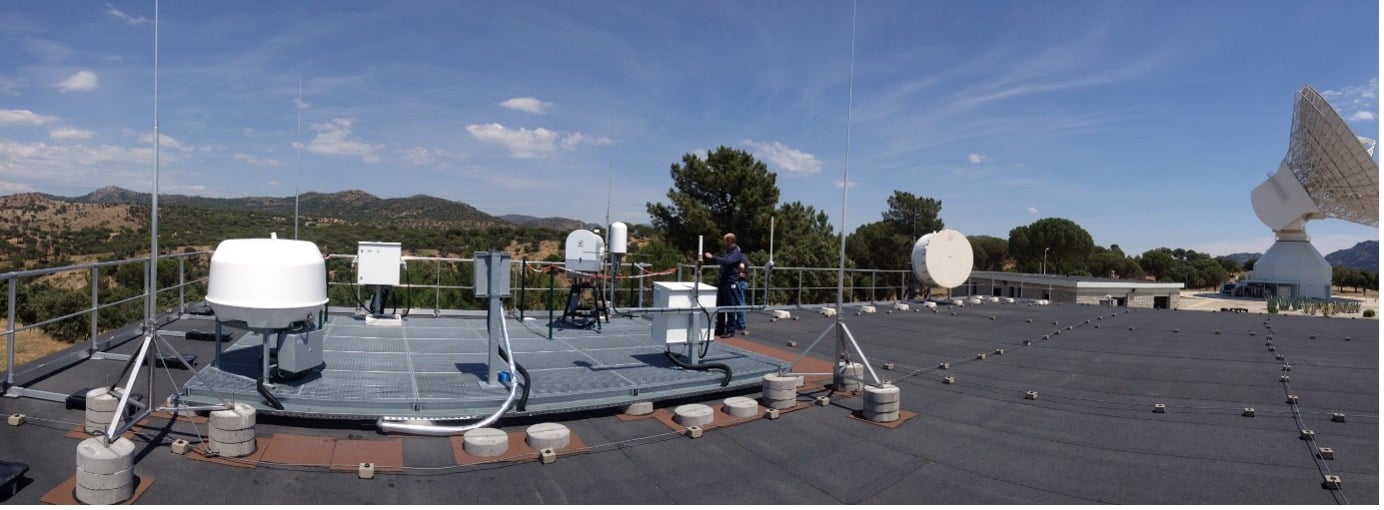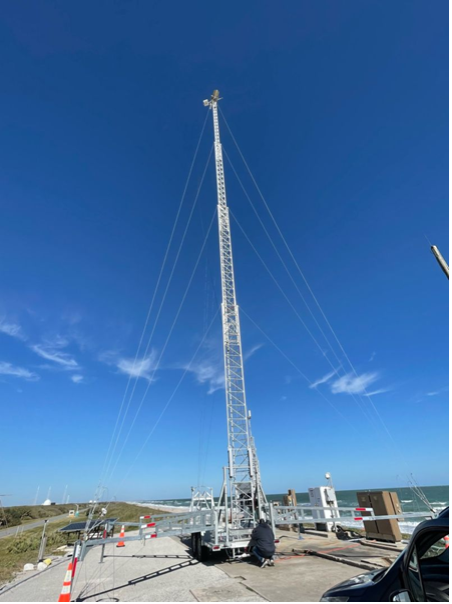Electromagnetic spectrum monitoring for space; ensuring smooth spaceport operations

In the rapidly advancing field of space exploration, the role of private and public spaceports has become pivotal. Spaceports serve as launch sites for various spacecraft, including satellites, crewed missions, and cargo deliveries. With the increasing global demand for space-based services, it is crucial to ensure spaceports operate smoothly and safely, and one vital aspect of this is spectrum monitoring.
This blog post explores the importance of spectrum monitoring in the context of spaceports and how it contributes to the success of space missions.
The new era of spaceports
The rapid expansion of private and public spaceports has precipitated a shift in how a spaceport is defined. Historically, spaceports were government-owned and operated, land-based launch facilities; however, today, the definition of a spaceport includes maritime drone ships. Moreover, private companies lease launch pads from governments or build entirely new spaceports, such as SpaceX’s launch site in Boca Chica, Texas.
What is spectrum, and why is it important to space operations?
The electromagnetic spectrum comprises different frequency bands. The advantages or disadvantages of using a particular band depend on the specific requirements of a mission or service.
The available electromagnetic spectrum is limited, and highly desirable portions of the spectrum are sought after by both governmental and private users. This is because the propagation characteristics that make these bands suitable for government applications also make them attractive for commercial wireless services.
These characteristics include the ability of radio waves to penetrate landscapes, travel long distances, and pass through buildings or cloud cover. While signals in lower frequency bands (below 3 GHz) can propagate over extensive distances and easily penetrate structures, millimeter wave signals (above 30 GHz) can only travel short distances and are not efficient in penetrating buildings for terrestrial applications.
Spectrum monitoring refers to the process of observing and analyzing the electromagnetic spectrum to identify and manage radio frequency (RF) signals.

CRFS Array at DSA-2 (©The European Space Agency)
What is the importance of spectrum monitoring at spaceports?
On land, spectrum monitoring is essential for issues such as the detection and mitigation of interference as well as overall spectrum management and optimization. It enables regulatory authorities to ensure fair and efficient allocation of frequencies, adapt to evolving technological needs, and maintain the spectrum for all stakeholders. However, electromagnetic spectrum monitoring in space is also vital for the smooth running of spaceports.
Frequency coordination
Spectrum monitoring plays a vital role in frequency coordination at spaceports. With multiple spacecraft, launch vehicles, and ground-based communication systems operating in close proximity, efficient management of the electromagnetic spectrum is crucial. Spectrum monitoring helps identify and resolve potential conflicts, interference, and jamming issues, ensuring that different systems operate on their allocated frequencies without disrupting each other.
Interference detection and mitigation
Space missions rely heavily on reliable and uninterrupted communication links. Interference from unauthorized or unintentional RF signals can disrupt ground control and spacecraft communications, leading to potential mission failures or compromised data. Spectrum monitoring allows for the timely detection of such interference sources, enabling swift mitigation measures to be implemented. By identifying the source of interference, appropriate actions can be taken to eliminate or minimize its impact.
Radio astronomy protection
Spaceports are often situated near remote locations with minimal radio interference, providing ideal conditions for radio astronomy. Spectrum monitoring is crucial in maintaining radio silence during specific astronomical observations, preventing any RF signals from spaceport operations that could interfere with sensitive radio telescopes. By actively monitoring the spectrum, potential sources of interference can be detected, and steps can be taken to mitigate their impact on scientific observations.
Drone Detection
Many spectrum monitoring systems can conduct simultaneous spectrum monitoring and drone detection tasks for Counter-UAS (CUAS). This multi-mission capability allows for a smaller sensor footprint across the spaceport—compared to having dedicated spectrum monitoring and drone detection sensors. By detecting drones using RF, security forces can mitigate and defend spaceports from unauthorized surveillance or terrorist activity.
Regulatory compliance
Spaceport operations are subject to various regulations and guidelines set by national and international authorities. Spectrum monitoring plays a crucial role in ensuring compliance with these regulations, including frequency allocations, power limits, and transmission protocols. By actively monitoring the spectrum, spaceport operators can verify their compliance with regulatory requirements and take corrective measures if any deviations are detected.

CRFS Node atop a mobile trailer at Cape Canaveral, Florida
SpaceX’s Falcon Heavy rocket successfully carried out its first launch mission for the U.S. Department of Defense on November 1, 2022. CRFS supported Space Launch Delta 45 by supplying RF spectrum monitoring across the launch site. The CRFS team provided service and technical support, delivering the real-time RF spectrum data necessary to ensure the launch’s safety and security.
Conclusion
As public space exploration and commercial space activities continue to expand, spectrum monitoring remains integral to ensuring smooth operations at spaceports. From frequency coordination and interference detection to safety and security, spectrum monitoring provides valuable insights into the electromagnetic spectrum landscape—enabling spaceport operators to address potential issues proactively. By actively monitoring and managing the spectrum, spaceports can maintain efficient and reliable communication links, safeguard scientific observations, and ensure the safety and success of space missions.
Zac George
Zac George is the International Business Development Manager for CRFS. He is a former naval Electronic Warfare officer and also has experience in digital decoding. He speaks regularly on EW and spectrum topics globally, and lives in Switzerland.

